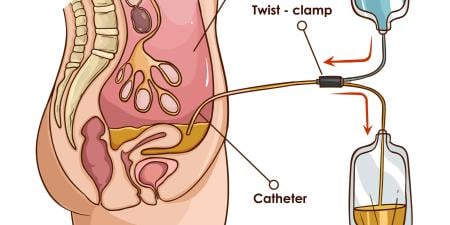Gruen RL, Pearson SD, Brennan TA. Physician-citizens—public roles and professional obligations. JAMA. 2004; 291:94-99.
Physicians ought to take a more public role in advocating for better health care, argue Russell Gruen and his fellow authors. The authors favor "greater public engagement" to "stimulate dialogue" on health concerns, because "all physicians have a primary ethical and professional responsibility for the health of the community members they serve."1
The physician-citizen ideal connects with social contract theory on the premise that "most parties…agree that the relationship binding the professions and society is a type of social contract."1 In the medical profession, then, physicians inhabit "domains of professional obligation and aspiration"—concentric circles extending outward from the patient-physician relationship. These domains extend to local community health problems and on to global socioeconomic forces in the outer domains of professional aspiration. At present, physicians lack the experience to do public advocacy in the most effective way, and the physician-citizen model promotes the idea that physicians must train themselves not only for patient care but for public debate and action on behalf of health care.
This physician-citizen model of the medical profession envisions physicians extending their sphere of influence from daily practice into the public arena, not for power's sake, but for community health. The article's authors offer ischemic heart disease as a good example of a complex medical problem, the solutions to which cross many domains of activity. Given that racial minorities lack access to good cardiac health care, physicians must respond because they are uniquely able to remedy that injustice—not only at the office, but through education, prevention, and improved access. So, a cardiologist ought to devote time to this set of social problems as well as his or her individual practice.
A physician who buys into this view of wide-ranging social responsibility may wonder what kind of career it implies. Mining Gruen's footnotes yields some exemplary names and stories, such as that of H. Jack Geiger, MD, whose work on African American health care is emblematic of a socially involved physician.2
Long ago, Geiger began to work on poverty, race, and health. He battled Mississippi state authorities for the right to feed undernourished Black sharecroppers' families with state money from his health center pharmacy, because the specific therapy for starvation is food. His recent research in the Institute of Medicine's Unequal Treatment report (2002) provides the evidence to back up the claim that minorities, especially Blacks, are lacking in care for heart disease.2 Gruen et al maintain that such social involvement beyond the day-to-day routine at work is part of the profession of medicine.
Physician-citizens must strive for progress in the domains of professional obligation based on their own judgment about where they can have an immediate impact. In these domains, the physician's responsibilities are not only individual patient care, but access to care, and action to mitigate socioeconomic disparities in health care.
In the outer domains of professional aspirations, the physician will join with professional societies or with citizen groups to make progress faster. Here the physician acts more as a citizen, but with the hope of affecting broad health trends and even global health problems. Some efforts have to transcend national boundaries: it's urgent that the latest medical research be made available worldwide, for example. While these may not be obligations exactly, the payback will be alleviation of suffering for today's patients, prevention of future public health problems, and ultimately restoration or enhancement of trust in the medical profession.
A Public Agenda
Gruen et al contend that "though individual action is laudable, collective action is a hallmark of professionalism."3 Therefore, the physician-citizen model proposes a specific public agenda.4
The first agenda item is an obligation to promote access to health care by attacking root causes of poor access, such as lack of health insurance, a dearth of interpreters for foreign-language patients, and poor transportation systems.
A corollary of the access problem is the high cost of health care, which threatens access. Physicians must engage in debates about pricing of essential medical services—administrative costs, pharmacy use, and radiology costs, for example.
The other major item on the "public agenda" is to address socioeconomic factors "most directly associated with poor health outcomes."5 In each medical specialty, this means taking action where it matters most. Pediatricians will support childhood immunizations and work to prevent child abuse, while trauma surgeons will push for bicycle helmet and seat belt use. Oncologists, for their part, would publicize programs to prevent skin cancer.6
Broader issues need attention. Should the profession speak out more forcefully about nonmedical issues? Housing quality certainly affects health if lead from old paint is a hazard for the residents, for example. Preventing asthma among low-income housing tenants might be a priority, too.
The physician-citizen model requires even physicians practicing in well-to-do suburbs to help. Although the model will demand more of physicians in lower socioeconomic-status areas, according to Gruen, physicians in affluent areas must use their resources to support the work of those colleagues in less affluent areas.
Lest this global push for health seem so overwhelming as to discourage physicians from getting started, the physician-citizen model suggests a range of practical activities.7
In "regular practice settings," physicians can:
1. Discuss health issues with patients and colleagues.
2. Work to improve care in their institutions.
3. Improve access for minorities.
4. Volunteer or offer care free of charge.
In the local, regional, national, and global communities, physicians can:
1. Work on public awareness about key issues.
2. Engage in public advocacy (eg, letters, petitions, lobbying).
3. Push medical societies to act on important public health matters.
4. Participate in political organizations.
5. Work for a cause or a candidate.
What's not clear from this article is how the authors expect the profession of medicine to coalesce around the proposed agenda or to organize the effort to achieve its admirable goals. They are more concerned to present the model as one worthy of the time and commitment of physician-citizens. Although the authors' vision could be construed as a radical, activist one, it is conservative in its implicit trust that existing institutions, governments, and medical societies will move the public agenda along. Attempting to bypass political differences, the authors conclude on a note of optimism that if physicians get more involved in public debate, health care can only benefit by that effort, despite some level of dissent. While physicians, individually and collectively, are left to decide what issues and when to intervene in the outer domains, they are reminded that greater participation is vital for the future of the profession, if it is to live up to its potential.
Questions for Discussion
- What do you consider to be the "professional obligations" you have or will have toward your local community as a physician? Toward regional, national, or global communities?
- How should physicians prioritize health goals on a societal scale?
- How can physicians pursue their individual concerns, ideas, and priorities within organizations which must develop and act on agreed-upon advocacy agendas acceptable to a majority of their members?
References
- Gruen RL, Pearson SD, Brennan T. Physician-citizens-public roles and professional obligations. JAMA. 2004;291(1):94-98.
-
Geiger HJ. Racial and ethnic disparities in diagnosis and treatment: a review of the evidence and a consideration of causes. In: Unequal Treatment: Confronting Racial and Ethnic Disparities in Health Care.Washington DC: Institute of Medicine; 2002.
-
Gruen R, Pearson S, Brennan T, 97.
-
Gruen R, Pearson S, Brennan T, 96.
-
Gruen R, Pearson S, Brennan T, 96.
-
Gruen R, Pearson S, Brennan T, 96-97.
-
Gruen R, Pearson S, Brennan T, 97.



